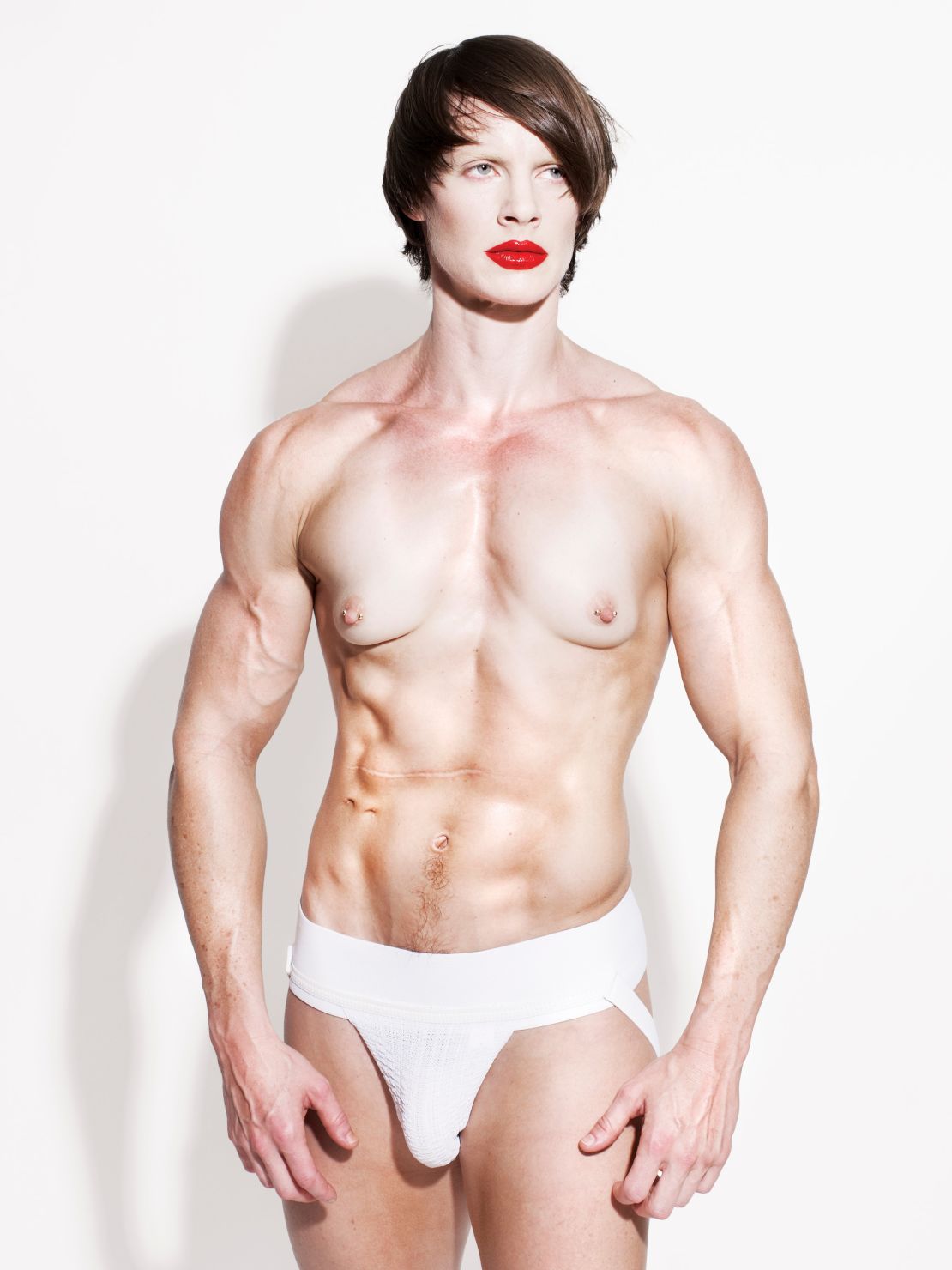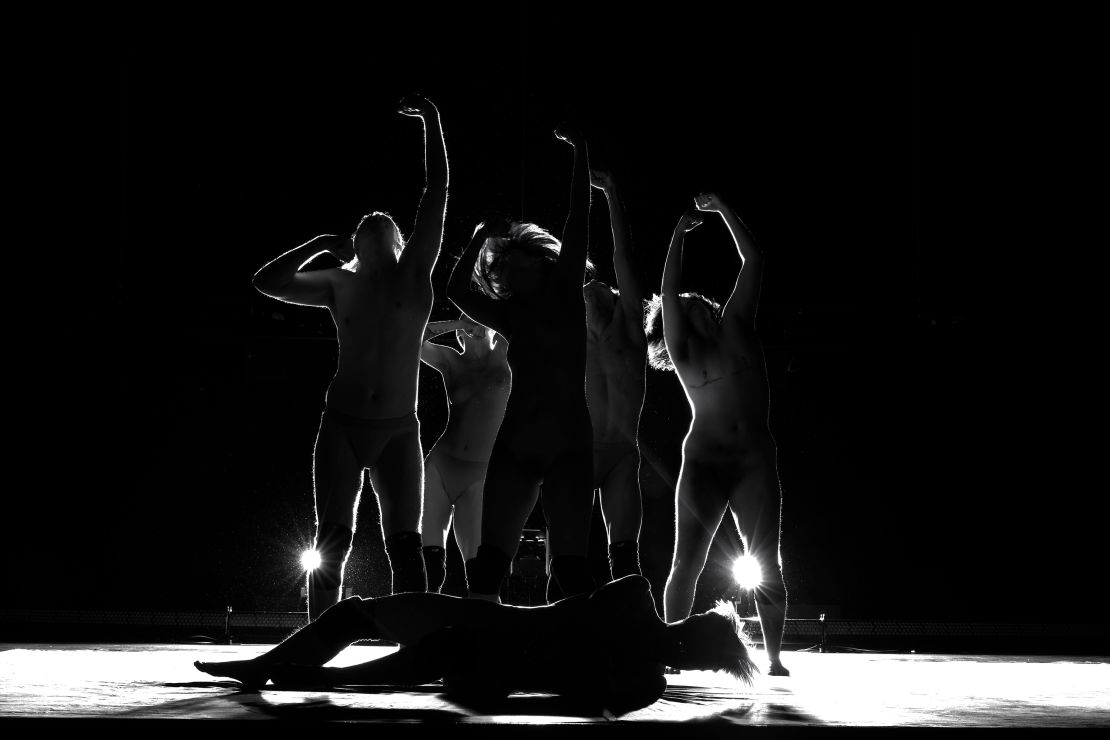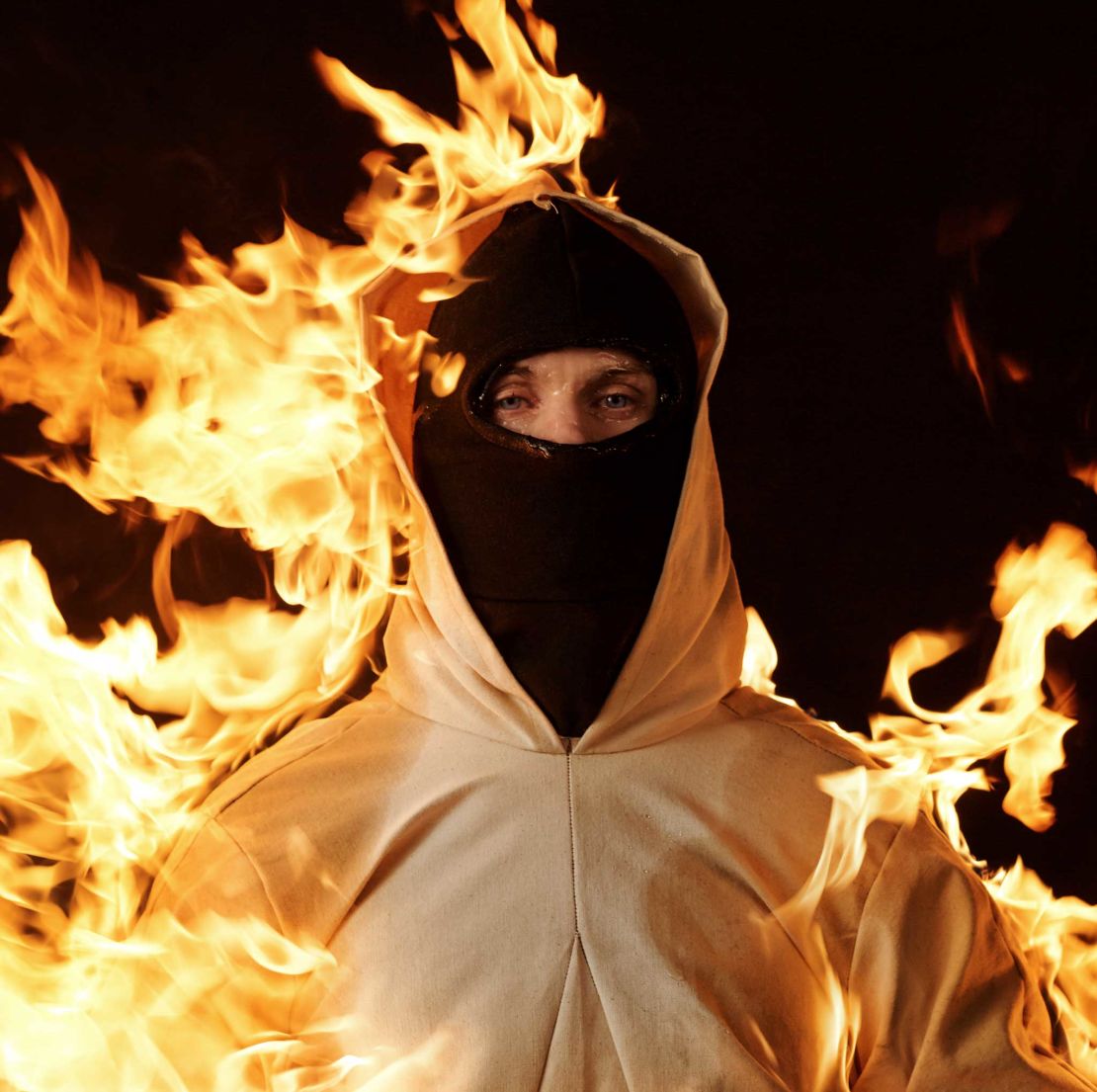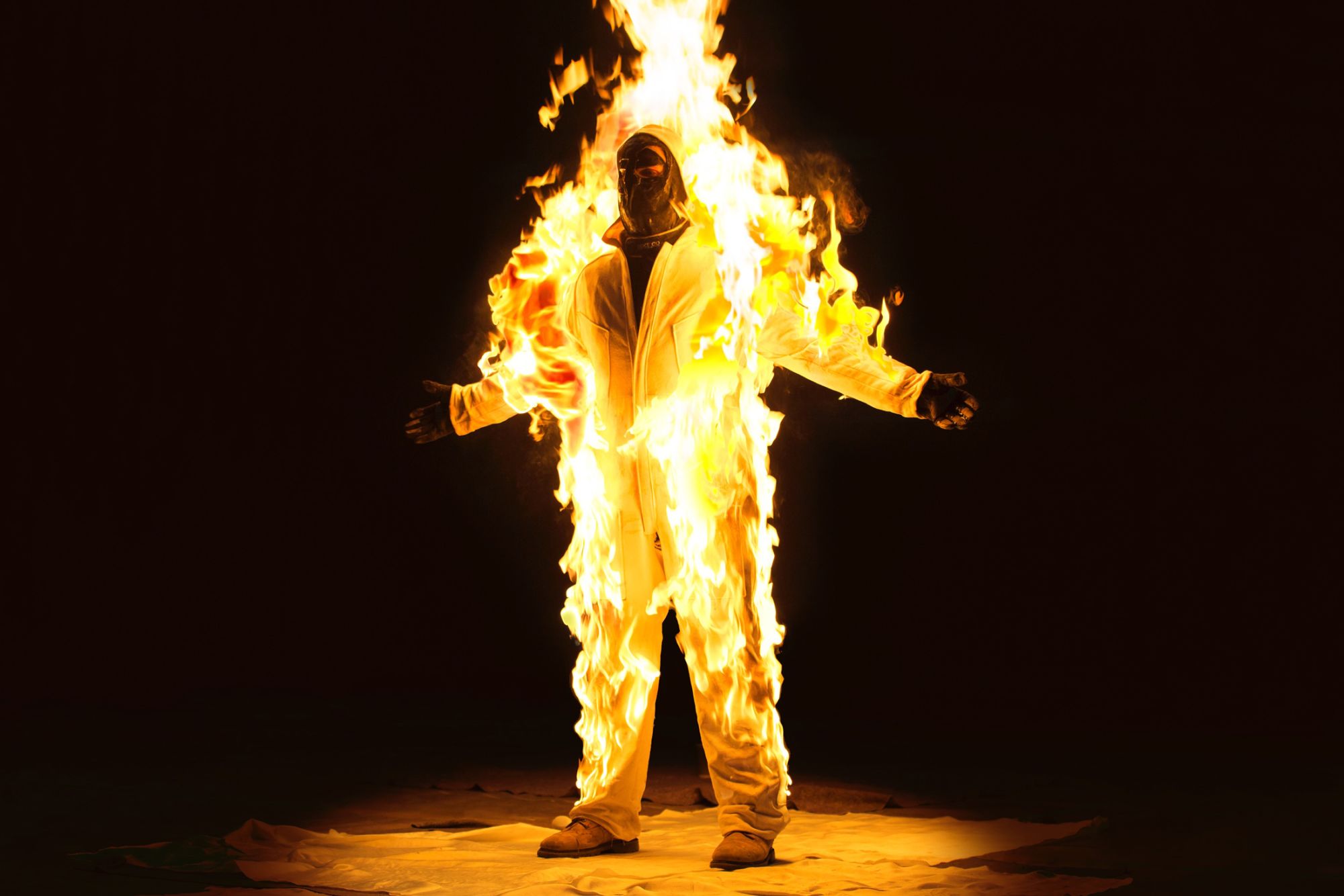Canadian artist Cassils has been set alight on stage, wrestled a 2,000-pound block of clay in the pitch dark and trained as a bodybuilder on a cocktail of steroids, raw eggs and protein.
If art exists to hold a mirror up to humanity, then Cassils’ performances speak to the extremes we can push ourselves to.
These extraordinary acts were also informed by the artist’s experiences as a transgender person. For instance, Cassils’ fast-tracked journey to an adonis-like physique, a performance titled “Cuts: A Traditional Sculpture,” rebelled against the idea that trans people require gender confirmation surgery to merit acceptance.
“When I (trained as a bodybuilder) in 2011, there were no words like ‘non-binary’ or ‘gender non-conforming,’” said Cassils, who uses they/them pronouns, in a video interview. “If you were trans, which very few people were, you were (told to have) surgical alterations, or you were signed up for a life-long prescription of injectable hormones. And if you didn’t do that, you were not considered trans – both by society at large and even by the trans community itself.”
After almost six months of training five days a week, Cassils had transformed their body into a hyper-masculine sculpture without surgical intervention. The performance was documented in a video, condensing 23 weeks of grueling work into just 23 seconds, and a series of photos showing the artist flexing their lean, rippling muscles and pouting with a perfectly-painted red lip. The images posed a striking answer to the question of what it means to be a man.

“Why is it that to identify as male, I have to surgically remove my chest?” Cassils said. “Why do I have to (take) a binaristic approach that is based in patriarchy and oppression? Why is my body the problem?”
A decade on, Cassils’ explorations of trans rights remain as relevant as ever. In a new dance performance titled “Human Measure,” which opened this month in Manchester, UK, the artist responds to the anti-trans laws currently sweeping the US. In April, 33 states proposed more than 100 bills that aim to curb the rights of transgender people, including banning trans athletes from participating in sports consistent with their gender identities and prohibiting health care professionals from administering gender-affirming care to minors.
“It is the largest assault historically in the United States, this stance on trans and gender non-conforming people,” Cassils said.
Despite legal setbacks, trans actors and celebrities have become increasingly visible in recent years. “Euphoria” actress Hunter Schafer has 3.6 million Instagram followers and has modeled for the likes of Prada and Calvin Klein. In March, six years after Caitlyn Jenner starred on the cover of Vanity Fair following her transition, actor Elliot Page became the first trans man to appear on the cover of Time magazine.
But this shift in media representation doesn’t equate to civil rights, Cassils argued: “What does it mean to create representation in this moment where we have a society that’s actively trying to destroy and erase you?”

Cassils’ response unfolds in a darkened theater at Manchester’s HOME cultural center, where the artist and a cohort of dancers perform illuminated only by a dim red light.
“(The light) has many different meanings to me,” Cassils said. “Everything from a siren, to blood, to emergency, to this idea of (photographic) development.”
“Human Measure” also riffs on the idea of visibility, both literally and metaphorically. By casting gender non-conforming dancers, Cassils defied heteronormative expectations and eliminated the pressures of filling traditional male and female roles.
“Young dancers, specifically, who are gender non-conforming are often forced to change their external (appearance) to placate more normative gender prescriptions,” said Cassils. “So this has been a process of allowing each (dancer) involved to bring that variance.”
An unorthodox education
For someone whose practice is built on the unconventional, Cassils grew up with a somewhat traditional view of art making. “I thought to be an artist meant to be a painter,” they said, “because I didn’t know anything else.”
This orthodoxy was challenged as soon as the Canadian artist arrived at the Nova Scotia College of Art and Design (NSCAD), a school that became renowned for its experimental approach in the 1960s and ’70s. “It was taken over by (a group of) radical, draft-dodging US conceptual artists from New York,” Cassils said. “I showed up knowing nothing about that world, and then just being really intoxicated by (progressive art).”
NSCAD’s avant-garde makeover has gone down in art history. It was led by the late conceptual artist Garry Neill Kennedy, who, after being hired as college president in 1967, replaced much of the teaching staff with a roster of visiting artists including German painter Gerhard Richter and American sculptor Robert Smithson.
“(Kennedy) really had turned that school into a place of radical experimentation,” said Cassils. “It led me onto a path. I started to see how powerful it could be to take things outside of a gallery setting and into the streets – into places where, perhaps, there were folks who felt alienated or ostracized by the edifices of museums or galleries.”
‘I will do whatever it takes’
Now in the third decade of their art career, Cassils could be excused for shying away from physically demanding performances like “Becoming an Image,” in which they punch and kick a huge block of clay in total darkness.
But the artist believes that aging enriches, rather than restricts, their work.
“”It’s why I performed ‘Becoming an Image’ over and over again,” they said. “Already, since 2012, I’ve seen through photographs that there’s this aging process you can see in my body, which is incredible. So you see this Sisphysian act of this person pummeling clay up and down. And already I’m seeing this as a masterwork that I might release in my 80s.”
There are some limits, however. For instance, “Inextinguishable Fire,” a 2015 performance in which Cassils entered a state of temporary hypothermia before being set on fire at the National Theatre in London, will never be performed again – if only for fear of excruciating medical bills, they said.

Everything else, though, is up for discussion. “It depends on the work. I think of my body as both an instrument and an image,” said Cassils. “Just like a painter works very hard to refine a brushstroke, there’s a sort of analog training protocol to my practice.”
When training for “Inextinguishable Fire,” Cassils would jog up a hill carrying a backpack filled with watermelons in an effort to improve their breathing control (inhaling at any point during the 14-second performance would char their esophagus). For “Becoming an Image,” meanwhile, Cassils conditioned their body for impact by taking martial art sessions four times a week for several months before the performance.
“People say, ‘Oh, he must be exhausted,’” they said. “I’m like, ‘No, I could actually do it three times more.’”
So what pushes Cassils to such demanding physical extremes when they are, in their words, “not competitive”?
“It’s not about winning for me. I am driven, and that’s different. I see being an artist as being a service provider. And I will do whatever it takes to create something that is meaningful and that can make the world a safer and better place for people.”



